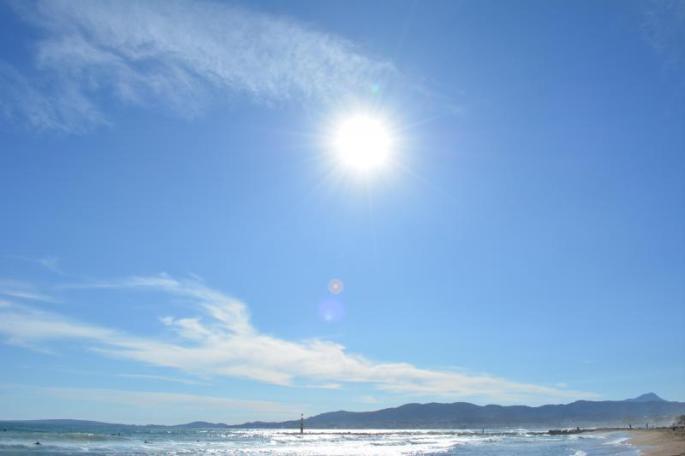A Mediterranean with very high temperatures will not only cause extreme rains, according to Meteored climatologist Samuel Biener, because it could also favour the occurrence of more extreme phenomena such as large hailstones, squalls and heavy rain, due to the warm, humid air coming from the sea. ‘Although there is talk of a possible episode of torrential rain in the coming autumn due to high temperatures in the Mediterranean, this is not the case at all,’ said Biener.
The expert explained that the Mediterranean is currently recording very unusual water temperatures for mid-June, with an average surface temperature of around 23.5ºC, according to the Centre for Environmental Studies of the Mediterranean (CEAM). In addition, buoys in Spanish ports have measured temperatures of between 25 and 26ºC in areas such as the Gulf of Valencia, the Balearic Sea and south of Tarragona, with peaks of 27ºC near Mallorca, values that until recently were typical of August.
According to data from the European Centre for Medium-Range Weather Forecasts (ECMWF), the waters of the Mediterranean now show the highest warm anomalies on the planet, with values between 3 and 3.5ºC above average, and up to 5ºC around Corsica and Sardinia.
According to Biener, this situation is related to the tropicalisation of the Mediterranean in recent years and is already having visible impacts: nights are becoming warmer in coastal areas, with records of hot nights (not falling below 25ºC) in cities such as Alicante.
In addition, as the intensity of the sea breeze decreases, its cooling effect is lost, increasing the feeling of humidity. At the same time, there is also concern about how this excess heat and humidity in the Mediterranean could intensify summer storms in Europe and the Iberian Peninsula. Furthermore, marine flora and fauna have already suffered significant damage as a result of this situation, which has been exacerbated by pollution.
